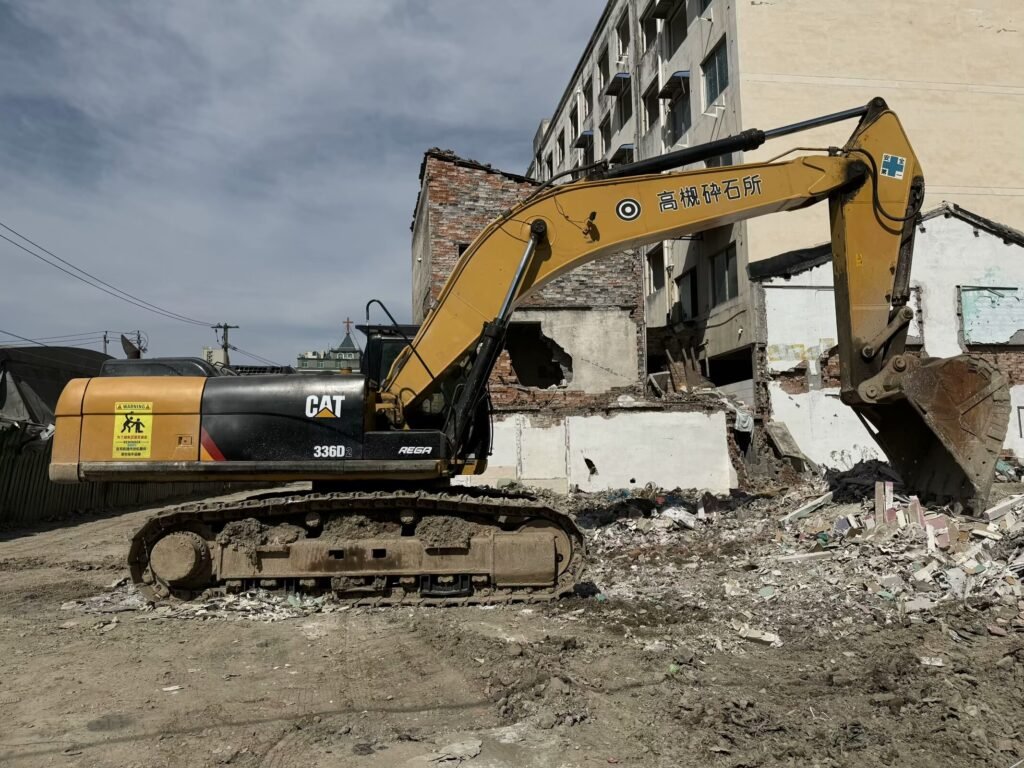I. Introduction
A. Background of Cross-Border Transportation and Storage
In the context of globalization, cross-border transportation has become an essential component of international trade, especially in the construction and heavy machinery industries. Excavators, as high-value equipment, often need to be transported and stored across borders. While this process offers opportunities for businesses, it also comes with a range of challenges and risks, including the complexity and uncertainty of legal regulations.
B. The Special Nature of Excavators as High-Value Equipment
Excavators are not only expensive but also technologically complex, making them susceptible to damage during transportation and storage. The loss of such equipment can lead to significant financial setbacks and can affect project timelines and overall operations. Therefore, developing a comprehensive protection plan is crucial to ensure the equipment arrives safely and effectively at its destination.
II. Risk Analysis in Cross-Border Transportation
A. Common Risks During Transportation
During the transportation of excavators, various risks may arise, including:
- Collision and Scraping: Transport vehicles may collide with other vehicles or obstacles, resulting in equipment damage.
- Adverse Weather: Rain, snow, fog, and other weather conditions can impact transportation safety and increase the risk of equipment damage.
- Theft and Vandalism: Stops during transportation and transfer points may expose equipment to theft or vandalism.
B. Potential Risks During Storage
There are also various potential risks during the storage of equipment, including:
- Environmental Factors: Humidity, extreme temperatures, or direct sunlight may cause corrosion, oxidation, or other forms of damage to the equipment.
- Improper Storage: If equipment is not stored correctly, it may suffer structural damage or component wear.
III. The Necessity of Insurance Solutions
A. Basic Concept of Insurance
Insurance is a risk management tool that provides financial protection for businesses, helping to mitigate potential losses. For excavators in cross-border transportation and storage, insurance is especially important as it effectively transfers risks.
B. How Insurance Can Reduce Financial Loss
By obtaining insurance, businesses can receive compensation in the event of equipment damage or loss, thus reducing financial pressure due to equipment downtime or repairs. The scope of insurance coverage can be tailored to the specific needs of the business to ensure maximum protection.

IV. Choosing the Right Type of Insurance
A. Transportation Insurance
Transportation insurance aims to provide protection for equipment during transit, including:
- Cargo Loss Insurance: Covers losses due to accidents, theft, or natural disasters.
- Liability Insurance: Provides legal liability protection in case of third-party damages caused by the equipment during transportation.
B. Storage Insurance
Storage insurance focuses on the safety of equipment during storage, typically including:
- Equipment Damage Insurance: Covers damage to equipment from environmental or human factors during storage.
- Theft Insurance: Protects against the risk of theft during the storage period.
C. Comprehensive Insurance Solutions
Comprehensive insurance solutions combine the benefits of both transportation and storage insurance, offering complete protection. This type of policy can provide continuous coverage for businesses throughout the transportation and storage process, reducing coverage gaps.
V. Evaluating Insurance Companies and Policies
A. Choosing a Reputable Insurance Company
When selecting an insurance company, consider the following criteria:
- Company Reputation: Check customer reviews and industry reputation to choose a company with a good track record.
- Claims Efficiency: Understand the claims process and speed of the insurance company to ensure quick compensation when needed.
B. Understanding Insurance Terms and Conditions
It is crucial to carefully read the terms and conditions of the insurance contract, especially regarding coverage scope, exclusions, and claims procedures. Ensure that all details are understood to avoid disputes later on.
VI. Risk Management and Preventive Measures
A. Strengthening Safety Measures During Transportation and Storage
Implementing effective safety measures is essential for reducing risks, including:
- Surveillance Systems: Install surveillance cameras in transportation and storage areas to prevent theft and damage.
- Protective Equipment: Use protective covers, straps, and other tools to ensure equipment stability during handling and storage.
B. Regular Inspections and Maintenance
Conducting regular inspections and maintenance of equipment is an effective way to prevent potential damage. By identifying and addressing small issues promptly, the lifespan of the equipment can be extended, and overall risks can be minimized.
VII. Conclusion
A. Protection Strategies for Cross-Border Transportation and Storage
Summarize the main strategies for protecting excavators during cross-border transportation and storage, including choosing appropriate insurance, implementing effective safety measures, and conducting regular maintenance to ensure equipment arrives safely at its destination.
B. Emphasizing the Importance of Insurance in Overall Protection
Reiterate the vital role of insurance in preventing accidental loss and damage, emphasizing that businesses should consider insurance as an essential component of their overall risk management strategy to safeguard their investment in high-value equipment.



